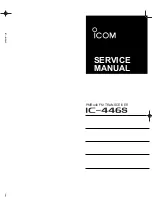
Model DT33x-0700
4-Wire DC I/V Dual Transmitter w/USB
Acromag, Inc. Tel: 248-295-0880
- 9 -
http://www.acromag.com
- 9 -
https://www.acromag.com
Output Connections
(To DC Current or
Voltage Terminals)
Each transmitter channel is modeled after ANSI/ISA Type 4 transmitter with its
power separate and isolated from the input and output circuits.
•
Output connections are polarized.
The current and voltage output terminals of
each output share a common return (RTN). Current output is sourced from I+
and returned to R. The Voltage output is sourced positive at V+ with respect to
return R. Only one channel output terminal (voltage or current) may be loaded
at a time, current or voltage, but each channel may be different.
•
Variations in load resistance has negligible effect on output accuracy
when
load limits are respected with respect to output type (see below).
Observe proper polarity. Note that twisted-pair wiring is often used to connect the
longest distance between each field output and its remote load as shown above.
Additionally, shielded twisted pair wiring is recommended for best results. An
output connection to earth ground at each output return will help protect the
isolated output circuit from damage in noisy environments.
WARNING:
For compliance to applicable safety and performance standards,
the use of twisted pair output wiring is recommended. Failure to adhere to
sound wiring and grounding practices as instructed may compromise safety,
performance, and possibly damage the unit.
TIP - Ripple & Noise:
Place additional capacitance at the load to help reduce the
60Hz/120Hz ripple sometimes present in industrial applications. For large 60Hz
ripple, connect an external 1uF or larger capacitor directly across the load to reduce
excess ripple. For sensitive applications with high-speed acquisition at the load,
high frequency noise may be reduced significantly by placing a 0.1uF capacitor
directly across the load, as close to the load as possible.










































